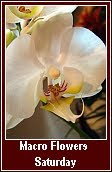Fer of My Little Gardern In Japan has started this Blog Carnival to showcase bloggers from all over the world, their favourite plants, flowers, trees, moss, veggies, fruits, etc etc etc....Its just like GBBD started by May Dreams Garden or some other special activities created by other bloggers. I think the idea is simply good fun, at the same time learning about each other's garden activities, their favourite things or just keeping in touch no matter in which part of the world we are....so start the Carnival rolling!!!!
MY ALL TIME FAVOURITE.....MULBERYY BUSH

my mulberry fruits from my mulberry bushes....

ripe mulberry fruits turn black or dark purple..very sweet
the beginning....mulberry seedlings propagated using mature stems planted in sand
It started off in 2007 when I embarked on a small private project with my friend, Prof Dr Abdul Wahab Arbain and 2 of his students to work on 2 plots of his land in Jeram, near Kuala Selangor, cultivating temperate plants and fruits like mulberry, pear, kiwi, apple, grapes, blackberry, olive and loquat. He thought me how to propagate mulberry seedlings from mature stems and from there, I planted 6 outside my fence. Since then they have grown so tall, lush and healthy and given me an abundance of sweet fruits after each pruning!

the flowers turning to little fruits after monthly pruning
if you dont pick them
Mulberry is the common name of Morus Moraceae with 3 main species : White mulberry (Morus alba L.), Black mulberry (Morus nigra L.) and Red mulberry or American mulberry (Morus rubra L.) Im not sure which is mine, probably Red mulberry or could it be Black mulberry? White mulberry is the native of China where they are grown mainly for feeding the leaves to silk worms. The Red or American mulberry is native of United States. While the Black mulberry is native to Western Asia and has been grown for its fruits in Europe since before the Roman times.
taste almost like strawberries
Mulberry is the common name of Morus Moraceae with 3 main species : White mulberry (Morus alba L.), Black mulberry (Morus nigra L.) and Red mulberry or American mulberry (Morus rubra L.) Im not sure which is mine, probably Red mulberry or could it be Black mulberry? White mulberry is the native of China where they are grown mainly for feeding the leaves to silk worms. The Red or American mulberry is native of United States. While the Black mulberry is native to Western Asia and has been grown for its fruits in Europe since before the Roman times.
I have shared the fruits and seedlings with family, friends and neighbours who have never seen a mulberry tree before and equally amazed at the amount of fruits on the trees each time they pass by my house. I made known to my neightbours that anybody is free to pick the fruits whenever they are in season. Usually I will pick the fruits in the morning while doing my gardening, sort of my quickie breakfast...:-)
All 3 types of Mulberry trees are deciduous and can grow to great heights. I have to prune the trees at least once a month to keep them low and bushy which will in turn spur them to start flowering. They need full sunlight and adequate space to grow with well-drained soil although they thrive with minimum fertilisation. As far as I remembered, I only fertilised the plants once at the beginning, when I spread chicken manure on each hole when planting the seedlings in 2007. I only watered them once a day for about a month and thereafter, left them to nature...but looking back, how they have grown since!
...as tall as my pondok too...thats why I have to keep pruning them
At one glance, the dark green, shiny mulberry leaves looking very much alike the leaves of the hibiscus. My neighbours thought they were hibiscus trees but was wondering why they were only leaves no flowers? Until they saw me with a red plastic strainer picking something at the trees and I showed and let them taste the sweet dark fruits! Usually I eat the fruits raw or will blend them to make fruit juice. They can also be made into jam used in fruit tarts, pies or puddings.
Why the mulberry trees are my all time favourite? Besides giving me lots of fruits to my family, friends and neighbours, they are sort of a novelty when I first introduced the tree to them, especially telling them about feeding the silkworms! Everybody is clamouring for the stems to plant them in their garden though I was told, most of them are unsuccessful! I guess I have greener fingers than them or just plain lucky! All you have to do is soak the stem in 2" of water overnight, push it into ordinary sand (or plant it directly at any place you want it to grow), water them everyday until it starts rooting and transplant it. They are great for hedges or as wind breaker.
Visit Fer's blog : http://www.mygardeninjapan.blog.com/ and join his Blog Carnival. Have Fun!






































































.jpg)










































